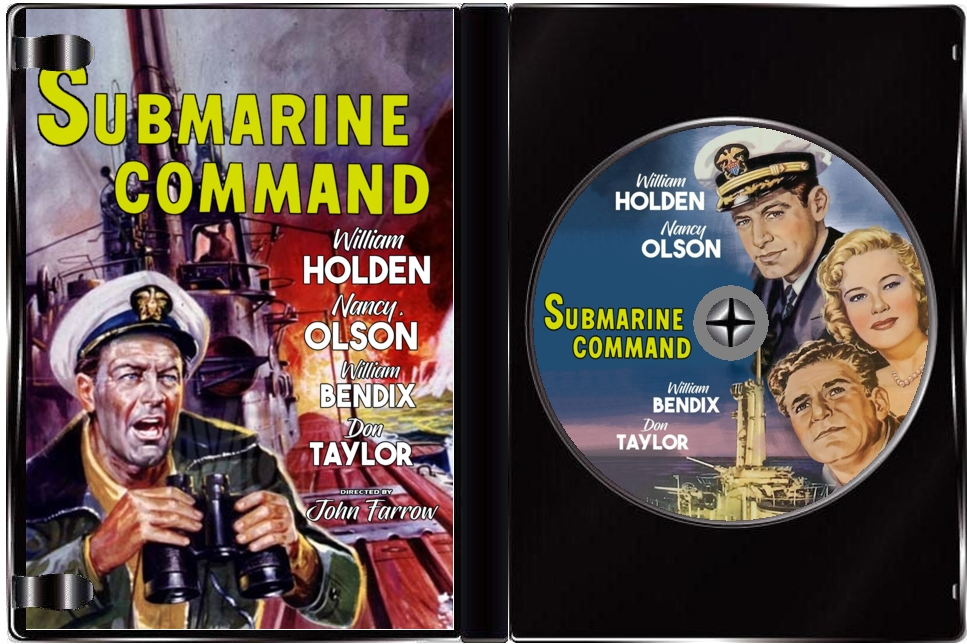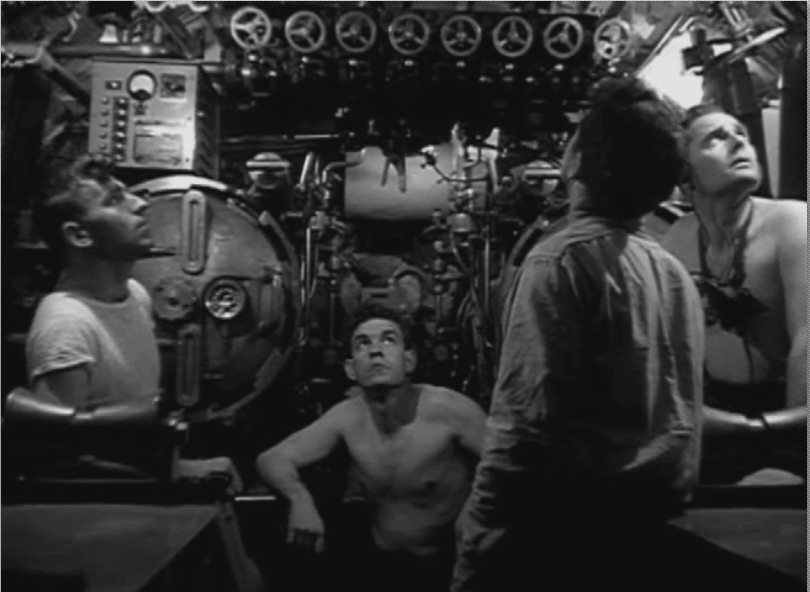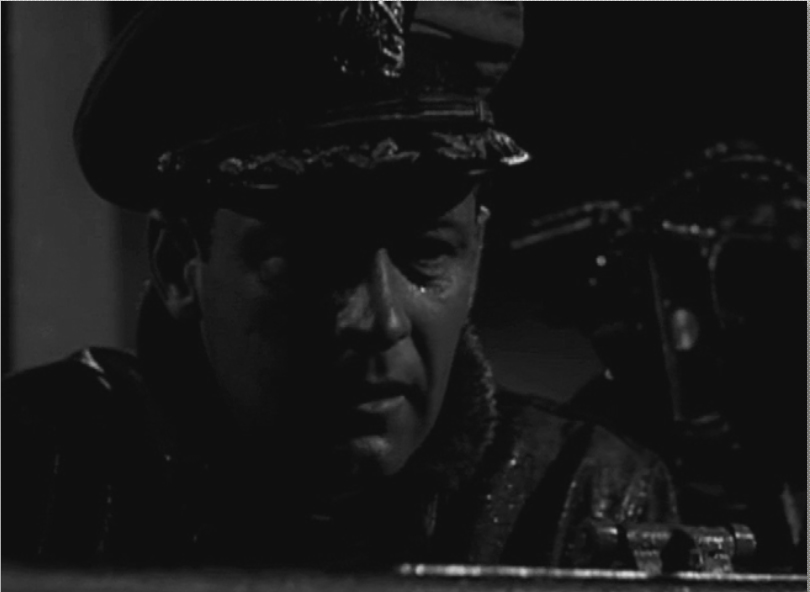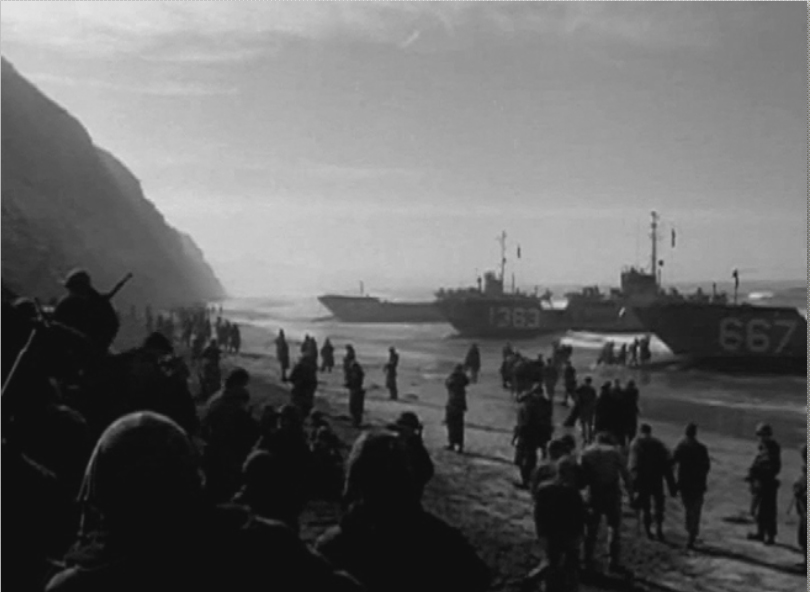| Go back
|
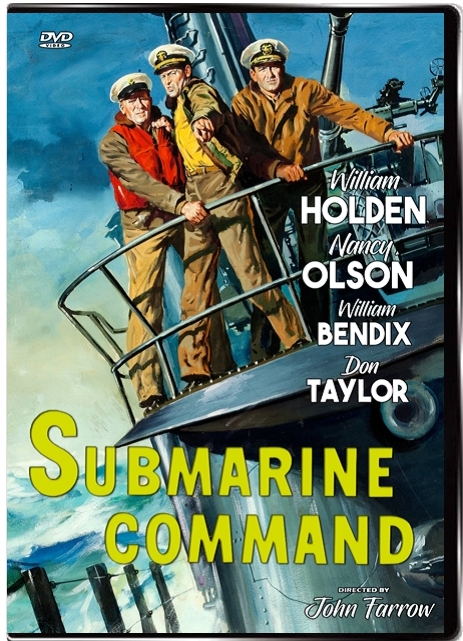 |
Submarine Command
1951 | 4:3 | Black & White | Quality: Very Good
William Holden
Nancy Olson
William Bendix
$12.00
|
During the closing days of WWII Ken White (William Holden) is second in command on the submarine USS Tiger Shark. When they come under attack from a Japanese plane, he orders the boat to dive in order to save it from being sunk. Unfortunately, the Captain and one other man are stuck on the deck, injured and unable to make it in time. The CPO aboard (William Bendix) holds Ken responsible for losing the men, though he had no other choice. Even the widow and father of the Captain assure Ken he did the right thing...but Ken won't forgive himself or forget it. Years later, Cmdr. White is a quiet man who is suffering through the boredom of the post WW II Navy. He is chained to a desk on a base near his old submarine, which has been decommissioned and mothballed. He visits it periodically to experience his wartime ghosts. Unhappy and racked with guilt, he is on the verge of chucking the Navy and taking his chances at civilian life. Nancy Olson plays his Navy wife, and William Bendex is still on hand with old time Chief Petty Officer wisdom and to remind Holden of his ghosts. Don Taylor portrays the fun and games Navy pilot who is teaching ROTC at a nearby college. They met at the end of the war when White's submarine rescued him. They maintain a friendship even though they have very different coping mechanisms about the horrors of war. When The Korean War breaks out, White is rescued from his desk and placed in command of (you guessed it) his old submarine the Tiger Shark. Taylor and Holden are united again and off the Korean Coast to undertake a dangerous mission - but can White put his past behind him and do what must be done?
John Farrow directs a story and screenplay by Jonathan Latimer about a decision questioned for too long of a time. It is said that star William Holden put up $20,000 of his own money to see this film was made. Submarine Command is an excellent example of the type of good entertainment that Hollywood used to grind out regularly back in the fifties. The actors, especially William Holden in the leading role, are all in good form. William Bendix provides a kind of stubborn, moral center in the movie, and one can only hope that Holden can get into his good graces. Most of the technical military-professional side of the film is realistically or at least convincingly (to me) handled. The term Post-Traumatic Stress Disorder was coined more recently, so you won't hear it used in "Submarine Command". However, some of the symptoms clearly are what Lt. Cmdr. Ken White (William Holden) are clearly what he's struggling with...making it one of the earlier war films to tackle this. The aircraft carrier used in the film, CV-21 USS Boxer, never received any major modernization, and thus throughout her career (1945-69) retained the classic appearance of a World War II Essex-class aircraft carrier. On 10 March 1948 she was the site of the first landing of a Navy jet aircraft (the FJ-1 Fury) aboard an aircraft carrier. She was also scheduled to be the prime recovery vessel for the Gemini 8 mission in March, 1966. This opportunity was missed, however, when Gemini 8 had an in-flight emergency and landed in the Western Pacific instead. SS-306 was actually the USS Tang. In her short career, lasting barely over a year, she amassed an unequaled record. Depending on the source, she sank either 24 ships for 93,824 tons or 31 ships in her five patrols, totaling 227,800. The Tang was sunk on 25 October,1944 with the loss of 74 men. Nine men, including her skipper, survived. Tang was sunk by her last torpedo which made a circular run. Picked up by a Japanese destroyer, the men were tortured by survivors of the ships she had sunk in her last action. They were interred at Japanese POW camps until the end of the war.
|
|
Click on Image to Expand
|
| Go back
|

